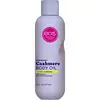What's inside
What's inside
 Key Ingredients
Key Ingredients

No key ingredients
 Benefits
Benefits

 Concerns
Concerns

 Ingredients Side-by-side
Ingredients Side-by-side

Helianthus Annuus Seed Oil
EmollientCarthamus Tinctorius Seed Oil
MaskingVitis Vinifera Seed Oil
EmollientIsododecane
EmollientParfum
MaskingSqualane
EmollientCaprylic/Capric Triglyceride
MaskingPhenoxyethanol
PreservativeButyrospermum Parkii Oil
EmollientTheobroma Cacao Seed Butter
EmollientArgania Spinosa Kernel Oil
EmollientHydrogenated Vegetable Oil
EmollientCitric Acid
BufferingBenzyl Benzoate
AntimicrobialHelianthus Annuus Seed Oil, Carthamus Tinctorius Seed Oil, Vitis Vinifera Seed Oil, Isododecane, Parfum, Squalane, Caprylic/Capric Triglyceride, Phenoxyethanol, Butyrospermum Parkii Oil, Theobroma Cacao Seed Butter, Argania Spinosa Kernel Oil, Hydrogenated Vegetable Oil, Citric Acid, Benzyl Benzoate
Carthamus Tinctorius Seed Oil
MaskingIsododecane
EmollientCaprylic/Capric Triglyceride
MaskingIsopropyl Myristate
EmollientParfum
MaskingOryza Sativa Bran Extract
Skin ConditioningBenzyl Alcohol
PerfumingHelianthus Annuus Extract
EmollientPrunus Armeniaca Kernel Oil
MaskingArgania Spinosa Kernel Oil
EmollientRosmarinus Officinalis Leaf Extract
AntimicrobialTocopherol
AntioxidantPelargonium Graveolens Flower Oil
MaskingButyrospermum Parkii Butter
Skin ConditioningLimonene
PerfumingCoumarin
PerfumingBenzyl Benzoate
AntimicrobialCitronellol
PerfumingGeraniol
PerfumingTheobroma Grandiflorum Seed Butter
Skin ConditioningPistacia Vera Seed Oil
Skin ConditioningLinalool
PerfumingCitral
PerfumingPaullinia Cupana Seed Extract
Skin ConditioningCarthamus Tinctorius Seed Oil, Isododecane, Caprylic/Capric Triglyceride, Isopropyl Myristate, Parfum, Oryza Sativa Bran Extract, Benzyl Alcohol, Helianthus Annuus Extract, Prunus Armeniaca Kernel Oil, Argania Spinosa Kernel Oil, Rosmarinus Officinalis Leaf Extract, Tocopherol, Pelargonium Graveolens Flower Oil, Butyrospermum Parkii Butter, Limonene, Coumarin, Benzyl Benzoate, Citronellol, Geraniol, Theobroma Grandiflorum Seed Butter, Pistacia Vera Seed Oil, Linalool, Citral, Paullinia Cupana Seed Extract
 Reviews
Reviews

Ingredients Explained
These ingredients are found in both products.
Ingredients higher up in an ingredient list are typically present in a larger amount.
You may know this ingredient as argan oil. Argan Oil has antioxidant, hydrating, and soothing properties.
Studies have shown argan oil can help fight again radical damage from the sun. This makes it effective at preventing hyperpigmentation.
Large amounts of vitamin E found in argan oil helps the skin retain water. Argan oil also contains fatty acids such as linoleic acid, oleic acid, and palmitic acid. It is also a good source of lipids.
Another benefit of argan oil is skin-soothing. It can help reduce inflammation-related skin symptoms.
Argan Oil is effective at regulating sebum production in pores. This can make it effective at treating hormonal acne.
Traditionally, argan oil was used for its antibacterial and antifungal properties. However, argan oil contains fatty acids that may make it not fungal-acne safe.
Argan Trees are native to Morocco.
Learn more about Argania Spinosa Kernel OilBenzyl Benzoate is usually created from the condensation of benzoic acid and benzyl alcohol. It is used as a preservative, solvent, and has a floral/balsamic scent in large amounts.
As a preservative, Benzyl Benzoate works against bacteria and fungus. It is often used to treat scabies and lice in medicine.
Solvents are used to keep ingredients together in a product. They can help dissolve ingredients to stable bases or help evenly distribute ingredients throughout the product.
Due to its fragrance, Benzyl Benzoate can be sensitizing and may cause contact dermatitis. It is a known EU allergen. We recommend speaking with a professional if you have any concerns.
Benzyl Benzoate can be naturally found in cranberries and peaches.
Learn more about Benzyl BenzoateThis ingredient is an emollient, solvent, and texture enhancer. It is considered a skin-softener by helping the skin prevent moisture loss.
It helps thicken a product's formula and makes it easier to spread by dissolving clumping compounds.
Caprylic Triglyceride is made by combining glycerin with coconut oil, forming a clear liquid.
While there is an assumption Caprylic Triglyceride can clog pores due to it being derived from coconut oil, there is no research supporting this.
Learn more about Caprylic/Capric TriglycerideCarthamus tinctorius seed oil comes from safflower, one of humanity's oldest crops.
Safflower seed oil contains a high percentage of linoleic acid and oleic acid. It also contains Vitamin E. These three components are effective moisturizers.
Vitamin E helps nourish your skin's lipid barrier. It is also a potent antioxidant. Antioxidants help fight free-radical molecules, or unstable molecules that may damage your skin cells.
Due to its high fatty acid content, this ingredient may not be malassezia folliculitis safe.
Thoughout history, safflower has been used for dying fabrics and in food as a saffron substitute.
Learn more about Carthamus Tinctorius Seed OilIsododecane is a fragrance, emollient, and solvent.
As an emollient, it helps your skin stay soft and hydrated. Emollients help trap moisture into your skin.
Isododecane's role as a solvent makes it a great texture enhancer. It spreads smoothly on skin and does not leave a sticky feeling behind. Isododecane also helps prevent color transfer in makeup products.
Isododecane is not absorbed into skin.
Learn more about IsododecaneParfum is a catch-all term for an ingredient or more that is used to give a scent to products.
Also called "fragrance", this ingredient can be a blend of hundreds of chemicals or plant oils. This means every product with "fragrance" or "parfum" in the ingredients list is a different mixture.
For instance, Habanolide is a proprietary trade name for a specific aroma chemical. When used as a fragrance ingredient in cosmetics, most aroma chemicals fall under the broad labeling category of “FRAGRANCE” or “PARFUM” according to EU and US regulations.
The term 'parfum' or 'fragrance' is not regulated in many countries. In many cases, it is up to the brand to define this term.
For instance, many brands choose to label themselves as "fragrance-free" because they are not using synthetic fragrances. However, their products may still contain ingredients such as essential oils that are considered a fragrance by INCI standards.
One example is Calendula flower extract. Calendula is an essential oil that still imparts a scent or 'fragrance'.
Depending on the blend, the ingredients in the mixture can cause allergies and sensitivities on the skin. Some ingredients that are known EU allergens include linalool and citronellol.
Parfum can also be used to mask or cover an unpleasant scent.
The bottom line is: not all fragrances/parfum/ingredients are created equally. If you are worried about fragrances, we recommend taking a closer look at an ingredient. And of course, we always recommend speaking with a professional.
Learn more about Parfum